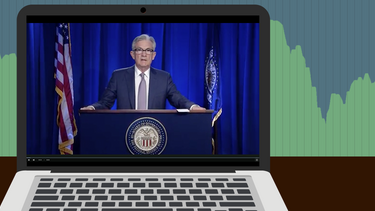Liquidity Injections May Have Driven the Stock Market Recovery
Stock prices fell by 30% in the early weeks of the COVID-19 pandemic, but then recovered, despite a poor outlook for the economy. To explain, Yale SOM’s Shyam Sunder points to the hundreds of billions of dollars injected into the economy by the Federal Reserve and other central banks.

Lockdowns in many economies around the world since March, and a sharp rise in U.S. unemployment, prompted a 30% drop in stock prices. However, the recent rebound in stock prices, in spite of economic projections of sharply lower, perhaps negative economic growth and business profits for 2020, has surprised many. If the price of a company’s shares reflects the discounted present value of future cash flows to shareholders, this stock market recovery makes little sense. However, there is a second important determinant of stock prices—the amount of money made available in the hands of investors by central banks.
In recent decades, central banks have reacted to sharp stock market declines by pumping money into the economy. The size of assets on central bank balance sheets is a measure illustrating this. See Figure 1 for a time series of total consolidated assets on the U.S. Federal Reserve System (FRS) balance sheet from December 2002 to June 2020. In 2008, the FRS assets more than doubled from US$901,710 million on August 6, 2008, to US$2,212,852 million on November 12, 2008. As the risk of widespread bankruptcies in the financial sector subsided, the stock market responded to this massive injection of money in the following year by recovering a large part of its losses and rising well above the 2008 levels.

The COVID-19 pandemic also induced an economic panic in March 2020. The FRS responded to the panic by again expanding its balance sheet assets by 66%, from US$4,241,507 million on March 4, 2020, to US$7,037,258 million on May 20, 2020: not surprisingly, the stock market soon recovered most of its March-April 2020 losses during May-June 2020.
The FRS has responded to sharp drops in stock prices during the recent two decades by pumping massive amounts of liquidity into the economy. These interventions to induce a price recovery have created a not-so-unreasonable expectation that any future precipitous stock price declines may also elicit a similar response from the central bank, especially during an election year under heavy political pressure. If rising stock prices are considered normal by investors and policymakers, and the latter tend to intervene to engineer a recovery from sharp declines, it does not seem unreasonable to believe (as some do) that the stock market will always go up.
In addition to the data from the field, a recent experimental research study (Hirota et al. 2020, forthcoming in JEBO) finds strong evidence that, even in the absence of any doubts about the fundamental value of securities, the presence of more money in the hands of investors generates higher prices in laboratory markets. Figure 2 summarizes the average price data under low- and high-liquidity conditions from a total of six independent sessions that each involved 180 human subjects.
The study concludes that the correspondence between prices and fundamental values in security markets requires not only that the investors be rational, but also that they expect the other current and future investors to behave rationally. While the first assumption may hold true, the second one is unlikely to hold true. Even in a world of rational investors, not everyone believes that all others are and will be rational; i.e., belief in the rationality of other investor is unlikely to be common knowledge in the investor community.
In such a world, it should not be a surprise that changes in supply of money affect stock prices. Perhaps this helps explain the rise in stock prices in recent months as a response to greatly increased liquidity injected by decisions of the U.S. Federal Reserve.
